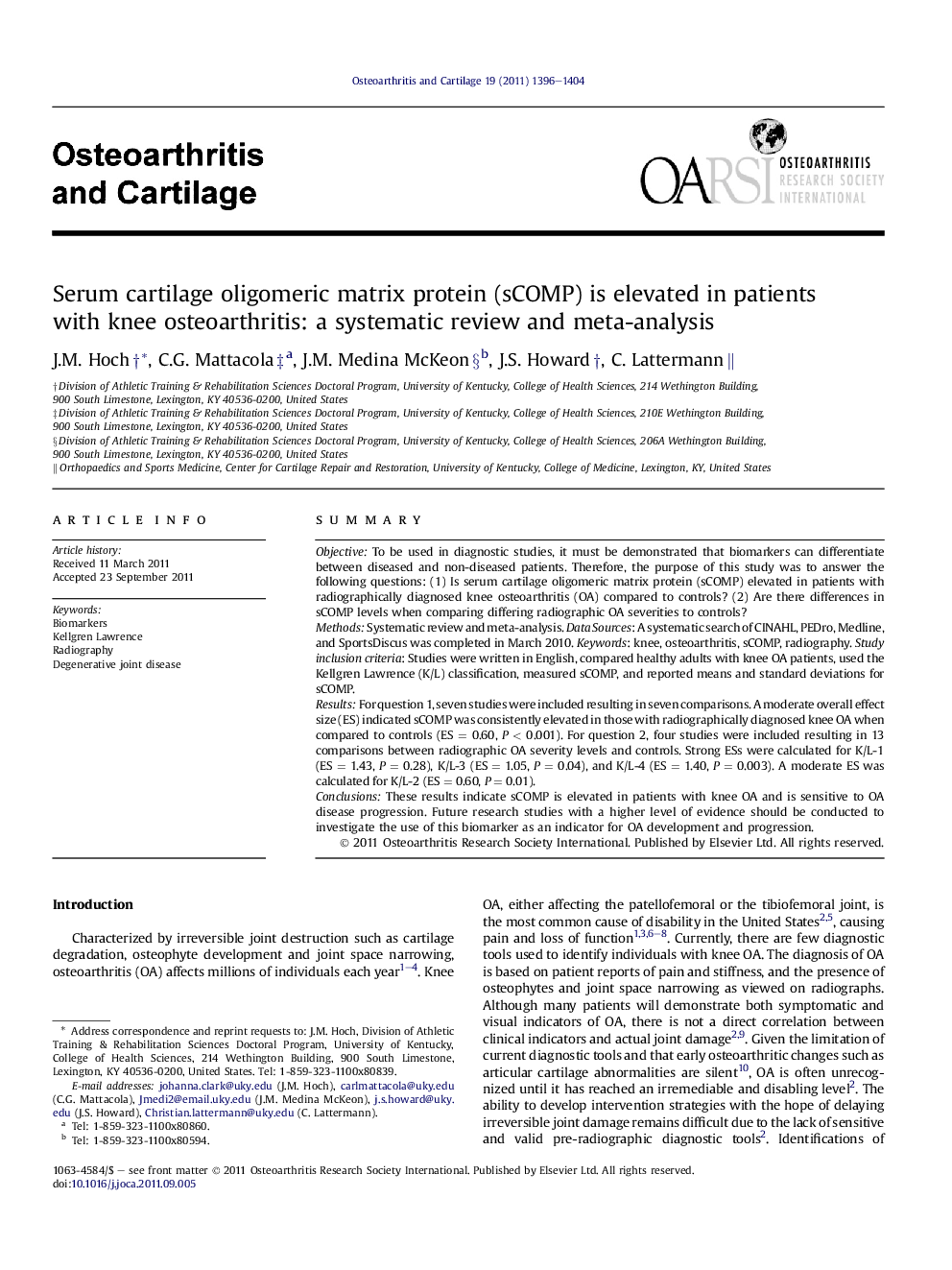| Article ID | Journal | Published Year | Pages | File Type |
|---|---|---|---|---|
| 3380247 | Osteoarthritis and Cartilage | 2011 | 9 Pages |
SummaryObjectiveTo be used in diagnostic studies, it must be demonstrated that biomarkers can differentiate between diseased and non-diseased patients. Therefore, the purpose of this study was to answer the following questions: (1) Is serum cartilage oligomeric matrix protein (sCOMP) elevated in patients with radiographically diagnosed knee osteoarthritis (OA) compared to controls? (2) Are there differences in sCOMP levels when comparing differing radiographic OA severities to controls?MethodsSystematic review and meta-analysis. Data Sources: A systematic search of CINAHL, PEDro, Medline, and SportsDiscus was completed in March 2010. Keywords: knee, osteoarthritis, sCOMP, radiography. Study inclusion criteria: Studies were written in English, compared healthy adults with knee OA patients, used the Kellgren Lawrence (K/L) classification, measured sCOMP, and reported means and standard deviations for sCOMP.ResultsFor question 1, seven studies were included resulting in seven comparisons. A moderate overall effect size (ES) indicated sCOMP was consistently elevated in those with radiographically diagnosed knee OA when compared to controls (ES = 0.60, P < 0.001). For question 2, four studies were included resulting in 13 comparisons between radiographic OA severity levels and controls. Strong ESs were calculated for K/L-1 (ES = 1.43, P = 0.28), K/L-3 (ES = 1.05, P = 0.04), and K/L-4 (ES = 1.40, P = 0.003). A moderate ES was calculated for K/L-2 (ES = 0.60, P = 0.01).ConclusionsThese results indicate sCOMP is elevated in patients with knee OA and is sensitive to OA disease progression. Future research studies with a higher level of evidence should be conducted to investigate the use of this biomarker as an indicator for OA development and progression.
